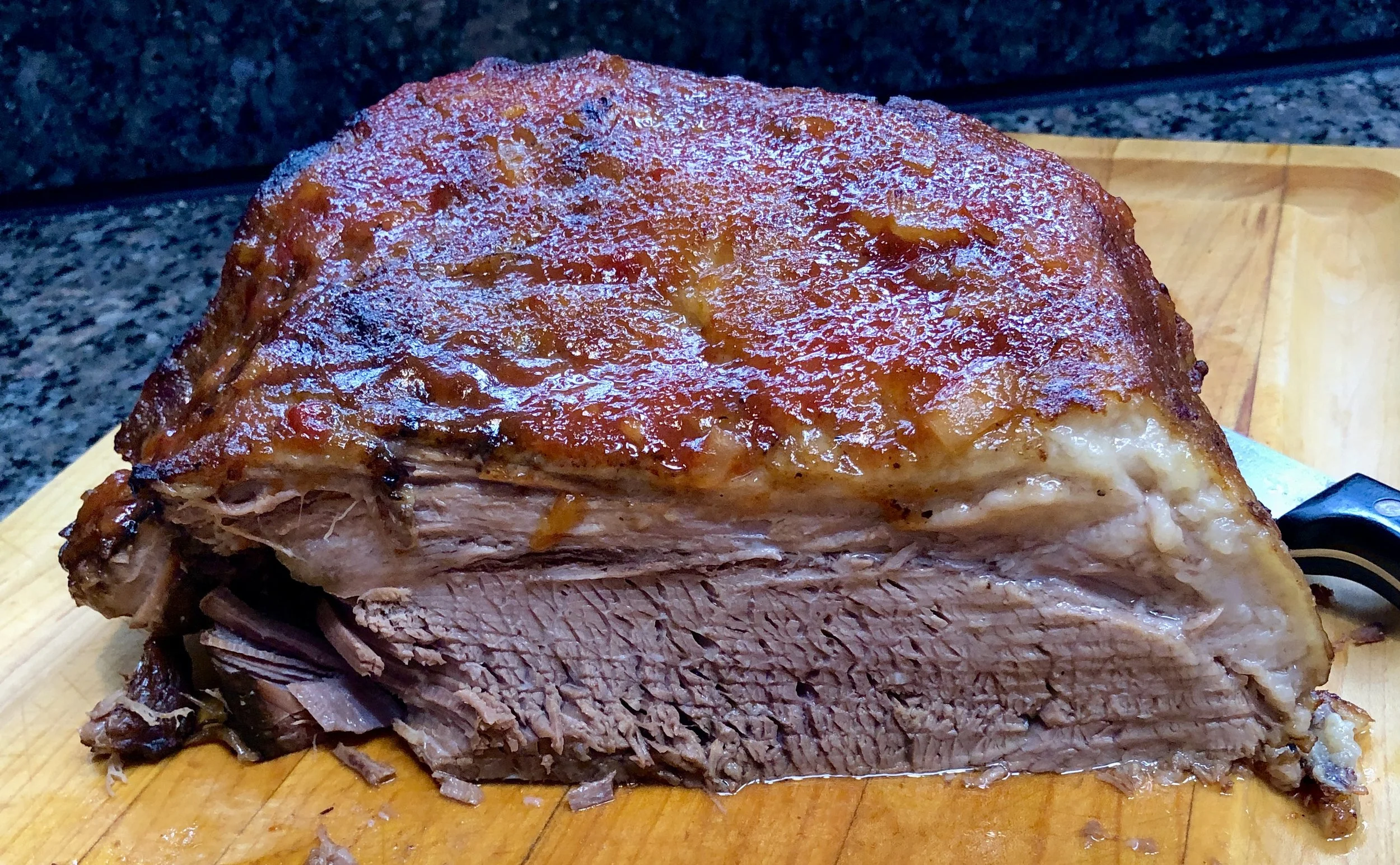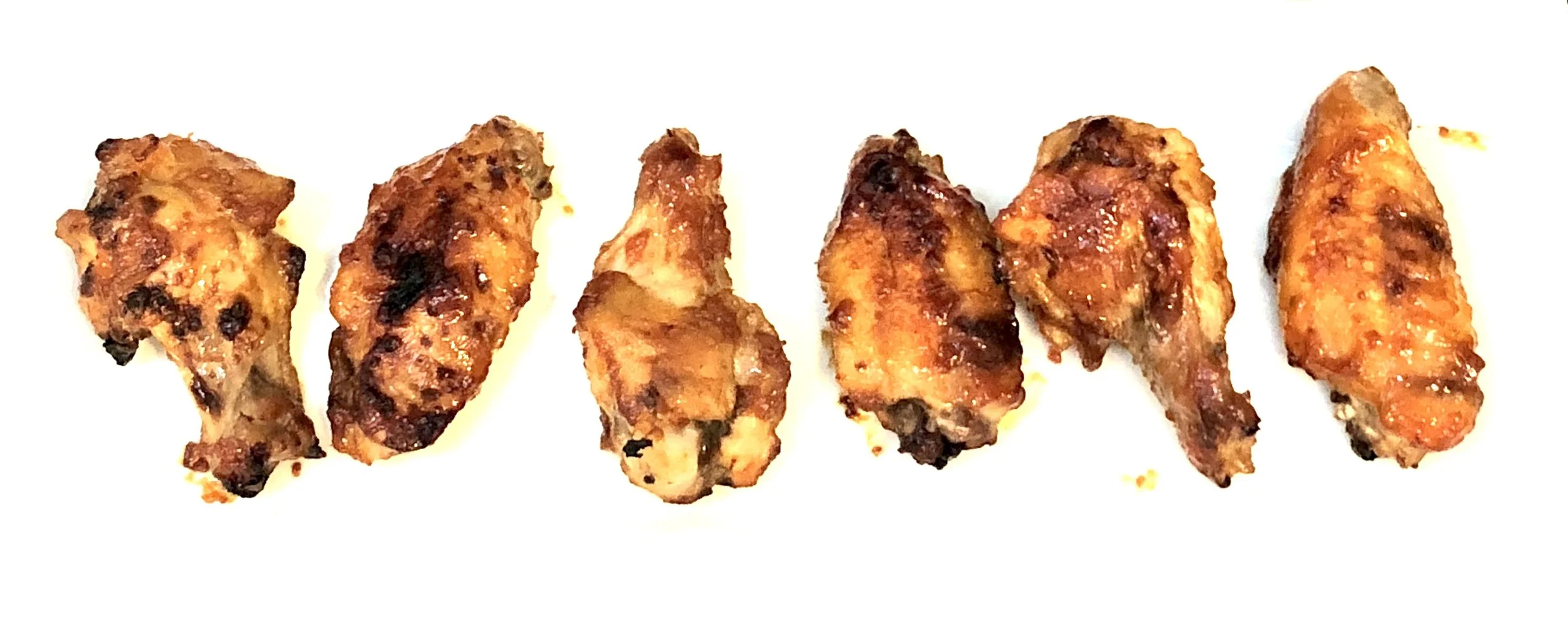I never liked my mother’s brisket. In fact I didn’t like brisket at all until recently. To me it was always this brown, wet meat and the slices were too narrow and lean. And unless the meat was cut into very thin slices, it was tough and stringy.
My mother always used first cut brisket.
Then I met my mother-in-law, who used second cut brisket.
My parents and in-laws actually got along and were good friends who travelled together. Even so, you can imagine what each of the women had to say about the other one’s recipe.
My mother said second cut brisket was too fatty. My mother-in-law said first cut wasn’t fatty enough.
I thought both were still too tough, too wet and too stringy.
So I experimented. Because that’s what I do. And in the process learned quite a lot about cooking this particular portion of meat.
Which can be tough and stringy if you don’t cook it right. And wet if you don’t do something good with the pan juices.
I buy a whole brisket. First and second cut. Yes, it’s way too big for my family, but I freeze some of it (portions from the fatty and lean parts together to please everyone tastes) because braised meat holds up very well in cold storage. A whole brisket has enough fat to enrich the meat, so that the leanest portions are more flavorful. And after the cooking has ended, you can cut away any excess fat that you don’t actually want to eat.
The real trick to brisket is LONG SLOW cooking.
Here’s what I do: you can see from the photo that all I do is season the meat with garlic powder, pepper and paprika (and salt if necessary). I scatter a lot of onions on top and throughout the pan. I cover the pan tightly with aluminum foil.
NO STOCK. NO WATER. NO WINE.
It doesn’t need anymore liquid. The onions and the meat give off enough.
I put the pan in a cold oven before I go to bed at night, set the oven to bake at 250-275F degrees and go to sleep.
The next morning the brisket alarm clock wakes me up about many hours (for a large brisket 8 hours) later with the most glorious aroma ever. (Actually it competes with the coffee, which is set to brew just about when the meat is done.) If you choose a smaller portion, say a first or second cut piece, obviously, it takes less time (let’s say 4-5 hours).
But don’t follow those recipes that tell you to cook brisket at 350 degrees! Your pot roast will rebel and show you how tough it is.
I usually don’t serve brisket with the pan gravy. Sometimes I strain the juices and use it for soup. Sometimes I boil the pan gravy down and use it for things like mashed potatoes. Sometimes I puree the juices with the onions. It really all depends on my particular culinary needs at the moment.
As for the brisket: none of us likes it wet. So I let the meat cool and put it on the grill (or under the broiler or in a 425F oven), and keep slathering the surface with barbecue sauce and cook the meat until it is hot and crispy to a mahogany glaze on the surface.
This is not wet, stringy or tough. It’s just dee-lish!
The sauce I frequently use as a glaze is not appropriate for Passover. But here’s one that’s just fine.
Mango-Honey Barbecue Sauce
1 tablespoon vegetable oil
1 medium onion, finely chopped
1 large clove garlic, finely chopped
1 teaspoon finely chopped fresh ginger
1 teaspoon grated fresh orange peel
1 cup bottled chili sauce
1/4 cup orange juice
1/4 cup honey
1/4 teaspoon cayenne pepper
Peel the mango and puree the flesh in a food processor. Heat the vegetable oil in a nonstick saucepan over medium heat. Add the onion and cook for one minute. Add the garlic and ginger and cook for another minute. Add the orange peel, mango puree, chili sauce, orange juice, honey and cayenne pepper. Stir to blend the ingredients thoroughly. Cook over low-medium heat for about 15 minutes, stirring occasionally, or until slightly thickened. Let cool.
Makes about 2-1/2 cups




